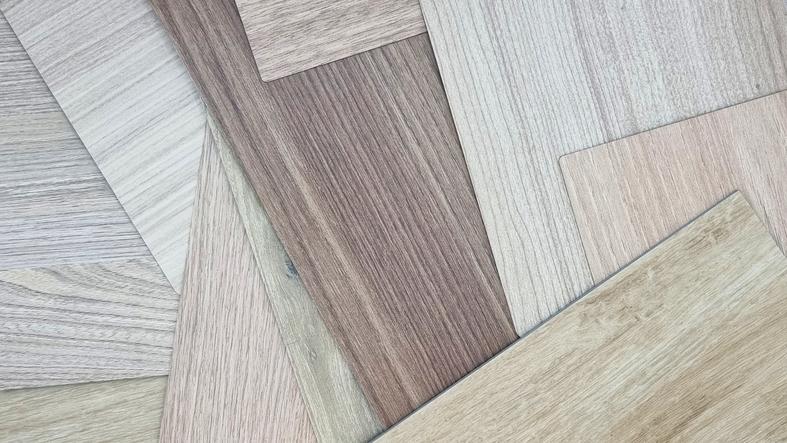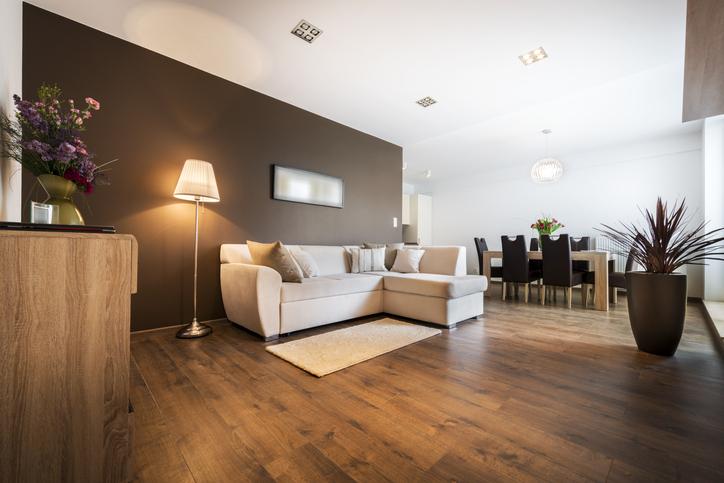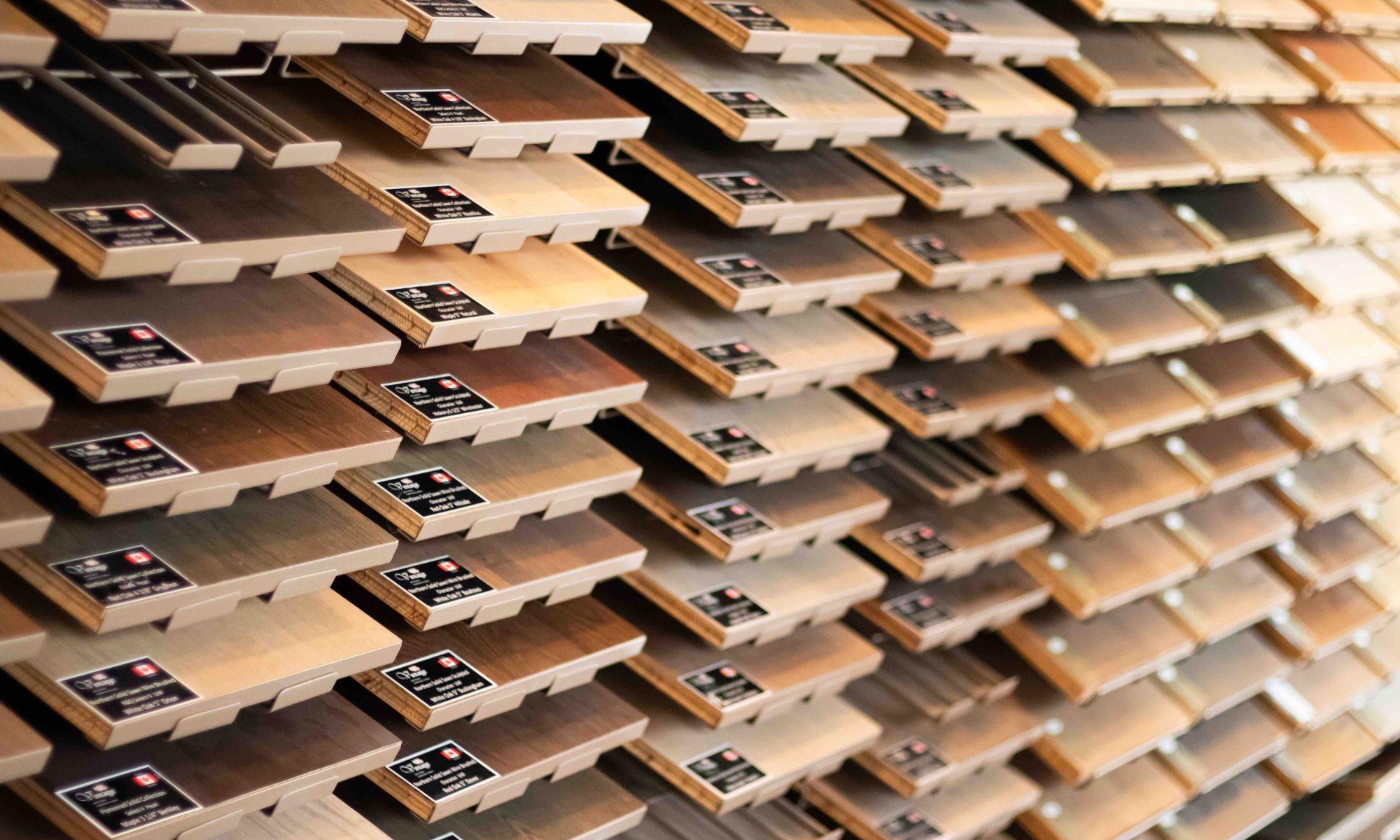With the current rise in the environmental movement and focus on sustainability, it is becoming increasingly dominant for homeowners and businesses to be conscious of the materials being used in their space. Therefore, it is important to know that different types of flooring materials have different environmental impacts ranging from energy consumption during production and installation, to having negative impacts on your health.
Read ahead to learn about the environmental impacts of laminate flooring, vinyl flooring, and hardwood flooring before you make a flooring decision for your home or business.
Environmental Impact Of Laminate Flooring
When considering laminate flooring’s environmental impact, this flooring is sourced from wood residues and can be recycled since it is made from repurposed natural resources. It also includes wood chips and sawdust from milling techniques.
Laminate flooring is a popular and easy-to-install flooring covering made from multiple layers of timber, a clear top layer, and a printed layer that achieves a natural look along with a thick underlayment to help absorb sound.
In addition, there is no need to use harsh chemicals to prepare the floor since laminate planks simply click into place during installation. Once they are installed, laminate floors are simple to clean with soap and water and this helps to protect indoor air quality.

Laminate flooring comes in a wide range of styles, colors, and patterns, allowing homeowners to find the perfect match for their preferences. Whether you prefer the look of hardwood, tile, or stone, there’s a laminate option to suit your taste.
Laminate flooring is highly durable and resistant to scratches, stains, and fading. It’s a great choice for high-traffic areas in the home, as well as commercial spaces, where durability is essential.
Many laminate flooring options feature moisture-resistant properties, making them suitable for use in areas prone to moisture, such as kitchens, bathrooms, and basements. This moisture resistance helps prevent swelling and mold growth.
Unlike carpeting, which can trap dust, allergens, and pet dander, laminate flooring provides a smooth and easy-to-clean surface that doesn’t harbor allergens. This makes them a healthier choice for people with allergies or respiratory problems.
Environmental Impact of Vinyl Flooring
Polyvinyl chloride or PVC is a type of plastic derived from fossil fuels. To understand the environmental impact of vinyl flooring, it is important to consider that the method used to extract these resources and the manufacturing processes required to produce PVC can add to carbon emissions.
Once vinyl flooring is damaged, it cannot be refinished which means the flooring has to be removed and replaced. There are many additives and chemicals used in the production of PVC which makes recycling this material a complex and challenging task which can lead to a higher likelihood of PVC resulting in landfills at the end of its lifespan.
In addition, various chemicals can be released during the production of PVC and vinyl flooring such as phthalates and volatile organic compounds (VOCs). The materials used in PVC can sometimes emit various levels of VOCs into the air for a period after its initial installation. These substances can have negative effects on indoor air quality and potentially result in respiratory issues in the immediate environment. It is possible to offset these effects to some extent by ensuring that you purchase from a qualified material source and also ensure that the space is well-ventilated for some time after the installation.

Vinyl flooring offers a multitude of benefits, making it a popular choice for both residential and commercial spaces:
- Durability. Vinyl flooring is highly durable and resistant to scratches, dents, stains, and water damage.
- Variety of styles. Vinyl flooring comes in a wide range of styles, colors, patterns, and textures, including designs that mimic hardwood, tile, and stone. This versatility allows homeowners and designers to achieve the look they desire without sacrificing durability or affordability.
- Easy maintenance. Vinyl flooring is easy to clean and maintain, requiring only regular sweeping and occasional mopping to keep it looking its best. Unlike hardwood or tile, vinyl doesn’t need to be refinished or resealed, saving time and money on maintenance.
- Affordability. Vinyl flooring is often more budget-friendly than other flooring options such as hardwood or tile.
- Water resistance. Many vinyl flooring options are water-resistant or waterproof, making them suitable for use in areas prone to moisture, such as bathrooms, kitchens, and basements. This water resistance helps prevent damage from spills, leaks, and humidity.
- Easy installation. DIY-friendly installation processes can save both time and money on installation costs.
- Sound absorption. Vinyl flooring has sound-absorbing properties that help reduce noise transmission, making it a quieter option compared to hardwood or tile. This is particularly beneficial in multi-story homes or commercial spaces where noise reduction is important.
- Hypoallergenic. Vinyl flooring is resistant to mold, mildew, and allergens, making it a healthier choice for individuals with allergies or respiratory issues. Unlike carpeting, which can trap dust and pet dander, vinyl provides a smooth and easy-to-clean surface that doesn’t harbor allergens.
Vinyl flooring offers a durable, affordable, and versatile flooring solution with a wide range of benefits, making it an excellent choice for any space.
Environmental Impact of Wooden Floors
Hardwood flooring is the most environmentally friendly option available since the raw materials from trees used to produce them can regrow after they are cut down.
Hardwood floors can last for more than 100 years, and their durability leads to a reduced amount of waste in landfills. When it is time to discard hardwood, there are several environmentally friendly ways to dispose of hardwood floors at the end of their lifespan.
These include recycling wood floors into other materials and using them as fuel or as a heating source. Wood from hardwood flooring is biodegradable which means that it will decompose if it ends up in the landfill.

Wooden floors, often made of hardwood such as oak, maple, or walnut, offer numerous advantages that make them a popular choice for homeowners and designers alike. Here are some of the key pros of wooden floors:
-
- Timeless beauty. One of the most significant advantages of wooden floors is their timeless beauty and elegance. The natural grain patterns and rich tones of wood add a touch of luxury and sophistication to any space, enhancing its overall aesthetic appeal.
- Variety of styles. Whether you prefer a classic, rustic look or a modern, sleek design, there’s a wooden floor option to suit every taste.
- Durability. Hardwood floors are known for their exceptional durability and longevity. With proper care and maintenance, wooden floors can last for generations, making them a wise investment for homeowners looking for a flooring option that stands the test of time.
- Value. Wooden floors can increase the value of a home and enhance its marketability. Potential buyers are often willing to pay more for a home with hardwood floors due to their perceived quality, durability, and aesthetic appeal, making them a valuable asset for homeowners.
- Easy maintenance. While wooden floors require regular maintenance to keep them looking their best, they are relatively easy to clean and maintain. Routine sweeping, vacuuming, and occasional mopping are usually all that’s needed to keep wooden floors in top condition.
- Versatility. Wooden floors are a versatile flooring option that can be installed in almost any room of the house, including living rooms, bedrooms, kitchens, and dining areas. They can also be sanded and refinished multiple times, allowing homeowners to change the color or finish of their floors to suit their evolving tastes.
- Improved indoor air quality. Unlike carpeting, which can trap dust, allergens, and pet dander, wooden floors provide a clean and hypoallergenic surface that improves indoor air quality.
</ul
Wooden floors offer a combination of beauty, durability, and value that makes them a timeless and desirable flooring option for any home or commercial space.
Environmental Impact of Bamboo Flooring
Bamboo is a rapidly renewable resource, with some species of bamboo growing several feet in a single day. This rapid growth rate makes bamboo a sustainable alternative to traditional hardwoods, which can take decades to mature.

Bamboo flooring is known for its durability and longevity, often rivaling traditional hardwoods in terms of lifespan. This means that bamboo flooring doesn’t need to be replaced as frequently, reducing the overall environmental impact associated with flooring production and disposal.
High-quality bamboo flooring products are manufactured using adhesives and finishes that emit low levels of volatile organic compounds (VOCs). This improves indoor air quality and reduces the potential health risks associated with off-gassing from flooring materials.
Where to Buy Flooring in Calgary?
Smith Bros Floor is family-owned and operated and has been in the industry for over a century. We use industry-leading flooring and have the experience to guide you to make the right flooring decision.
We provide excellent customer service from site visits, to quotes, to the installation of your floors and follow-up. Contact us today for expert advice and to find the perfect floor!
